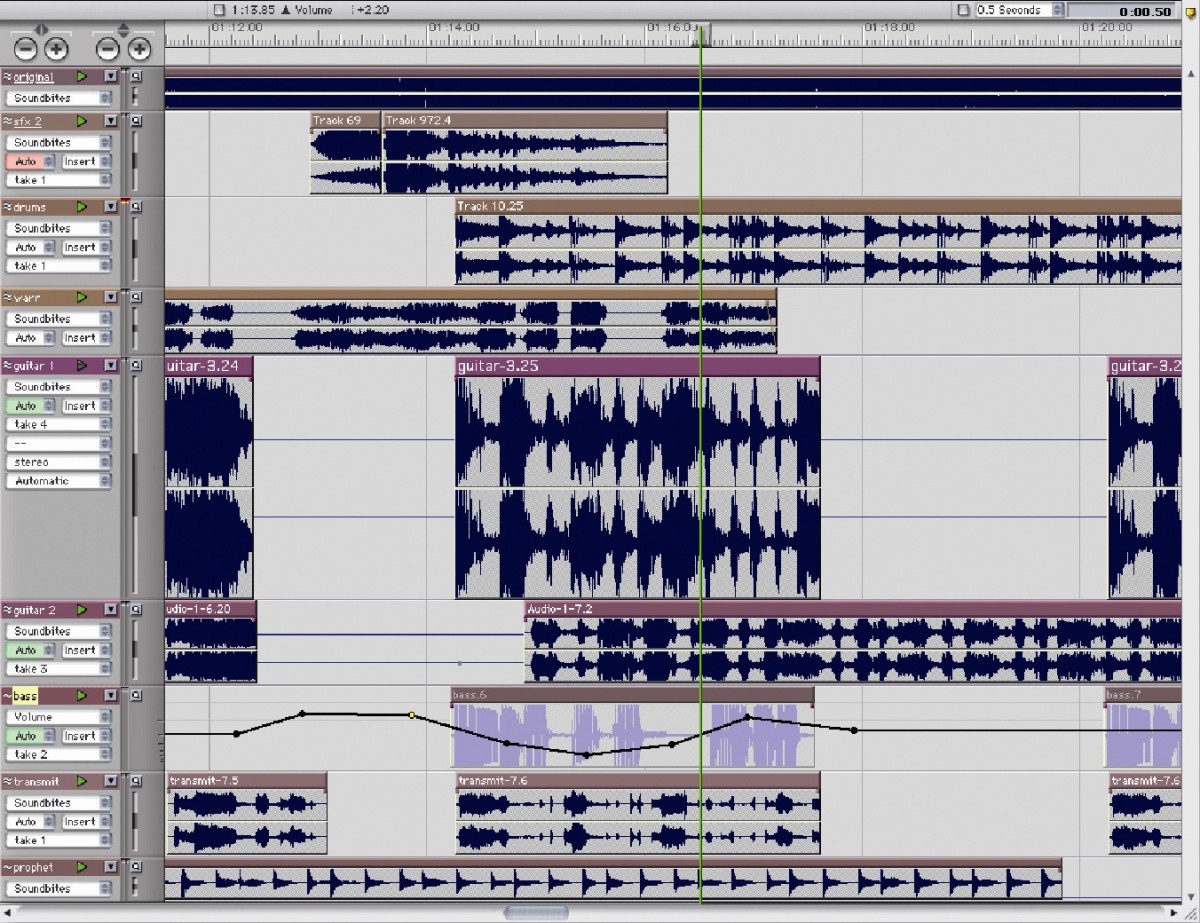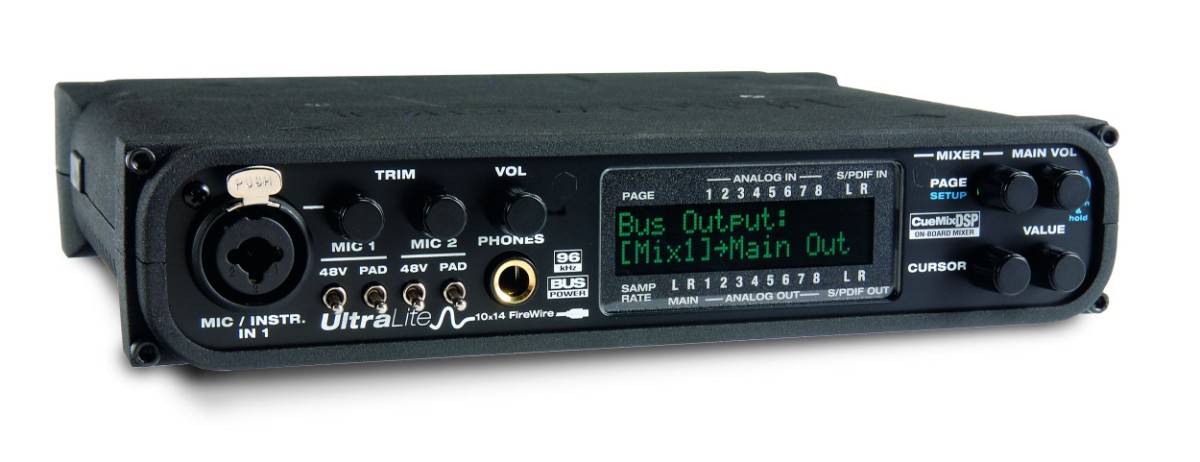MusicRadar Verdict
Small but perfectly formed, the UltraLite is a rugged interface at a very acceptable price.
Pros
- +
Good price. Great range of outputs. Very portable. Easy to use.
Cons
- -
The standalone capability is impressive, but a bit pointless.
MusicRadar's got your back

MOTU UltraLite

MOTU UltraLite

MOTU UltraLite
The UltraLite, Motu's latest FireWire audio interface, is essentially a cut-down 828MkII in terms of both physical size and connectivity.
Aimed at laptop music producers and the mobile musician, it's a roughly half-rack unit (8.5-inches wide, 7-inches deep) built to MOTU's usual high standard of sturdiness.
Though it's made of aluminium, it's ironically not actually particularly light. That's not to say it's heavy, but we was mildly surprised at the weight of the thing when first picking it up.
Setting up
Getting it up and running takes seconds: simply install the drivers and CueMix DSP software, plug the UltraLite in and turn it on.
The unit is bus-powered (six-pin FireWire only) for maximum convenience and portability, but can also take a generic power adaptor.
The UltraLite is designed to be used with a computer as a multi-I/O interface, or standalone as a digital mixer.
To that end, the front panel plays host to a multi-purpose LCD display and a set of menu navigation/operation push-button knobs, as well as the expected complement of volume and trim controls.
Want all the hottest music and gear news, reviews, deals, features and more, direct to your inbox? Sign up here.
The connections also kick off on the fascia, with a headphone jack and a combi XLR/TRS mic/ instrument socket located at the left-hand end for easy access that saves you having to reach round the back.
Hands on
The rear's where it's all happening socket-wise, though. The UltraLite boasts the same inputs and outputs as the 828MkII, minus the ADAT and two line inputs.
This leaves us with a second XLR/TRS mic/instrument input, six balanced/ unbalanced quarter-inch line inputs, eight quarter-inch line outputs, two main outputs, S/PDIF in and out, a 16-channel MIDI input and a 16-channel MIDI output, and two FireWire ports, the second for daisy-chaining with up to three more MOTU FireWire interfaces.
Considering the difference in size and price between this and the 828MkII, the fact that ADAT is the only thing that's been sacrificed is pretty remarkable. Although some might suggest that S/PDIF would have been the preferable forfeit of the two.
The two combi inputs each have their own dedicated 24dB Trim knobs, which step through their range in 1dB increments, as well as 48V phantom power and Pad switches.
The latter are tri-positional, offering zero, 18dB and 36dB of instant attenuation.
In use
The UltraLite has MOTU's CueMix DSP system inside, endowing it with highly flexible eight-bus mixer functionality and zero-latency direct monitoring.
It's completely possible to control every aspect of this from the front panel of the hardware itself, which, incidentally, features 16 fully editable preset slots stored in non-volatile memory.
But it's not exactly ideal from an ergonomic standpoint. While full standalone control of an audio interface like this is astonishing (and it works), but no engineer is going to want to mix using a 'page and cursor' setup on a 16x2 LCD.
Fortunately, for standard computer audio interface usage we have MOTU's excellent CueMix Console software that operates the UltraLite via a 'virtual mixer' graphical interface.
This enables you to create up to four different mixes on separate tabs in the Console window, with each routed to its own physical stereo output, but all sharing the full range of inputs.
So, for example, you could have a primary mix going to the main outs, a monitor mix going to the headphone output for your singer, and a third mix used as an effect send for an outboard reverb or delay.
Inputs have independent level and pan settings in each mix, so you can have a single source represented differently for up to four different purposes, all within the one CueMix Console setup.
CueMix Console also enables phase inversion, quick and easy headphone routing, and control room talkback/listenback, complete with Talk and Listen buttons in the main Console window.
You can even remotely control the whole interface with any HUI- or Mackie Control-compatible control surface.
All in all, it's a great bit of software, and we only have two complaints with it: the interface is a bit small, and we don't see the need for the four mixes to be on tabs - why not just have them all visible at once?
Conclusion
MOTU sell the UltraLite as "everything you need to turn your laptop or desktop Mac or PC into a mobile 24-bit 96kHz recording studio".
While that certainly doesn't make it a unique proposition, there's no doubt that they've realised the concept exceptionally well.
The size and consequent portability of the unit are hugely appealing, and CueMix Console works superbly, whether in conjunction with or independently of your DAW software.
However, while some may find the standalone capabilities useful, no-one's going to be replacing their mixer with it for computer-free engineering, that's for sure.
No, the UltraLite customer is going to be using it with a computer and in that respect it truly excels.
The drivers are rock-solid and the preamps and converters are as clean, punchy and generally as high quality as we've come to expect from MOTU.
The range and versatility of I/O and mixer routing on offer with the UltraLite are more than sufficient for today's average project studio, whether it's mobile or house-bound.
Future Music is the number one magazine for today's producers. Packed with technique and technology we'll help you make great new music. All-access artist interviews, in-depth gear reviews, essential production tutorials and much more. Every marvellous monthly edition features reliable reviews of the latest and greatest hardware and software technology and techniques, unparalleled advice, in-depth interviews, sensational free samples and so much more to improve the experience and outcome of your music-making.
